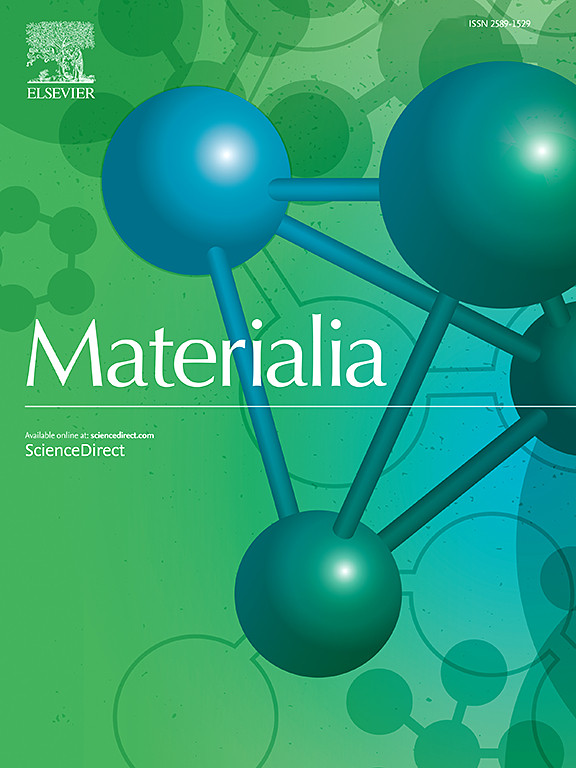A fully human In-vitro model for bone metastasis: potential of an electrospun scaffold as alternative to biological materials for osteoblast/osteoclast differentiation
IF 3
Q2 MATERIALS SCIENCE, MULTIDISCIPLINARY
引用次数: 0
Abstract
The development of bone metastases poses a clinical challenge for patients with malignancies originating from diverse organs, including lungs, prostate, and breast. These metastatic events correlate with a poorer prognosis, and treatments are predominantly palliative. Furthermore, traditional in-vivo models for bone metastasis research have limitations, primarily due to species-specific differences. Therefore, we sought an alternative in-vitro model that is human cell based, robust and capable of a relatively quick establishment. Initially, we studied the potential of a decellularized porcine jejunum scaffold named Small Intestinal Submucosa with mucosa (SISmuc) and compared it to decellularized human bone and two synthetic scaffolds. We assessed various parameters related to osteoblast differentiation such as calcification, collagen I protein expression, and further differentiation to mature osteocytes indicated by sclerostin protein expression. The synthetic electrospun matrix demonstrated to be a good alternative to SISmuc, particularly when combined with bioactive glass 45S5, which enhanced calcification. We also incorporated osteoclasts into our model and demonstrated that monocytes could be more effectively differentiated into osteoclasts in a 3D environment compared to traditional 2D cultures. Within seven weeks, we successfully generate an in-vitro model incorporating osteoblasts, osteoclasts, and tumor cells. As a potential strategy for treating bone metastases, we found Chimeric Antigen Receptor T cells within lung and pancreatic bone metastasis models to be effective in reducing the number of tumor cells and inducing apoptosis. This innovative research establishes a foundation for more sophisticated 3D in-vitro models of bone metastasis, holding significant promise for advancing preclinical cancer research and therapeutic strategies.

一个完整的人骨转移体外模型:电纺丝支架作为成骨细胞/破骨细胞分化替代生物材料的潜力
骨转移的发展对来自不同器官(包括肺、前列腺和乳腺)的恶性肿瘤患者提出了临床挑战。这些转移事件与较差的预后相关,治疗主要是姑息性的。此外,骨转移研究的传统体内模型存在局限性,主要是由于物种特异性差异。因此,我们寻求一种替代的体外模型,它是基于人类细胞的,强大的,能够相对快速建立。首先,我们研究了一种名为小肠粘膜下层(SISmuc)的脱细胞猪空肠支架的潜力,并将其与脱细胞人骨和两种合成支架进行了比较。我们评估了与成骨细胞分化相关的各种参数,如钙化、I型胶原蛋白表达,以及由硬化蛋白表达指示的成熟骨细胞进一步分化。合成静电纺丝基质被证明是SISmuc的良好替代品,特别是当与生物活性玻璃45S5结合时,可以增强钙化。我们还将破骨细胞纳入我们的模型,并证明与传统的2D培养相比,单核细胞在3D环境中可以更有效地分化为破骨细胞。在7周内,我们成功地生成了一个结合成骨细胞、破骨细胞和肿瘤细胞的体外模型。作为治疗骨转移的潜在策略,我们发现嵌合抗原受体T细胞在肺和胰腺骨转移模型中有效减少肿瘤细胞数量和诱导细胞凋亡。这项创新研究为更复杂的骨转移3D体外模型奠定了基础,对推进临床前癌症研究和治疗策略具有重要意义。
本文章由计算机程序翻译,如有差异,请以英文原文为准。
求助全文
约1分钟内获得全文
求助全文
来源期刊

Materialia
MATERIALS SCIENCE, MULTIDISCIPLINARY-
CiteScore
6.40
自引率
2.90%
发文量
345
审稿时长
36 days
期刊介绍:
Materialia is a multidisciplinary journal of materials science and engineering that publishes original peer-reviewed research articles. Articles in Materialia advance the understanding of the relationship between processing, structure, property, and function of materials.
Materialia publishes full-length research articles, review articles, and letters (short communications). In addition to receiving direct submissions, Materialia also accepts transfers from Acta Materialia, Inc. partner journals. Materialia offers authors the choice to publish on an open access model (with author fee), or on a subscription model (with no author fee).
 求助内容:
求助内容: 应助结果提醒方式:
应助结果提醒方式:


